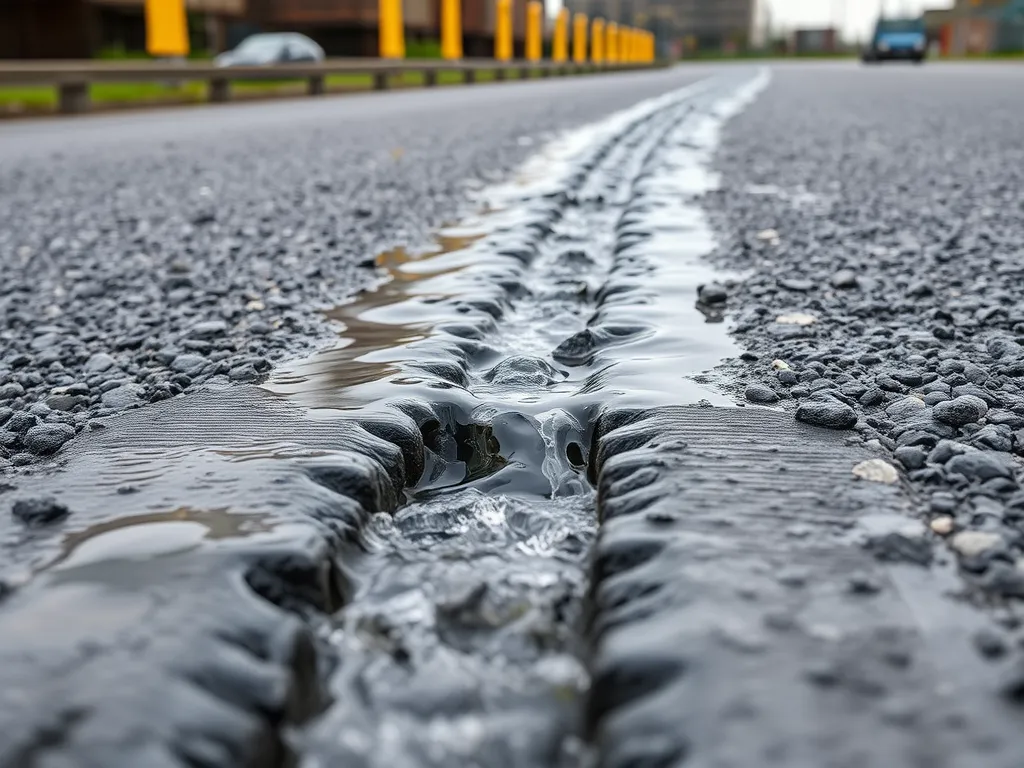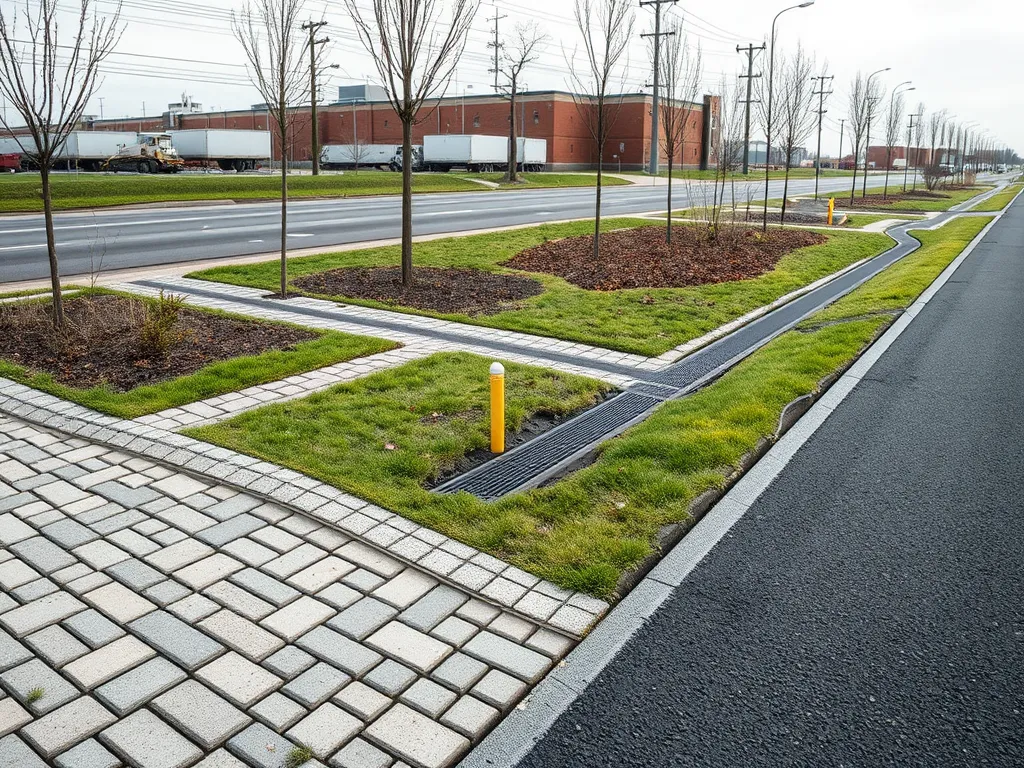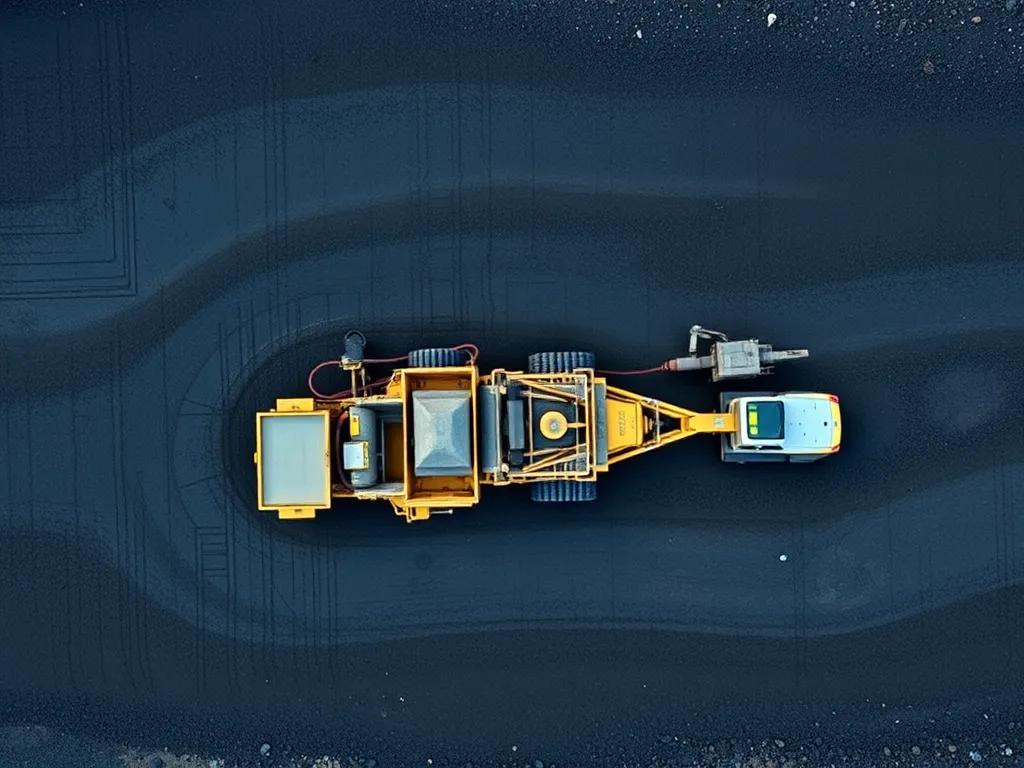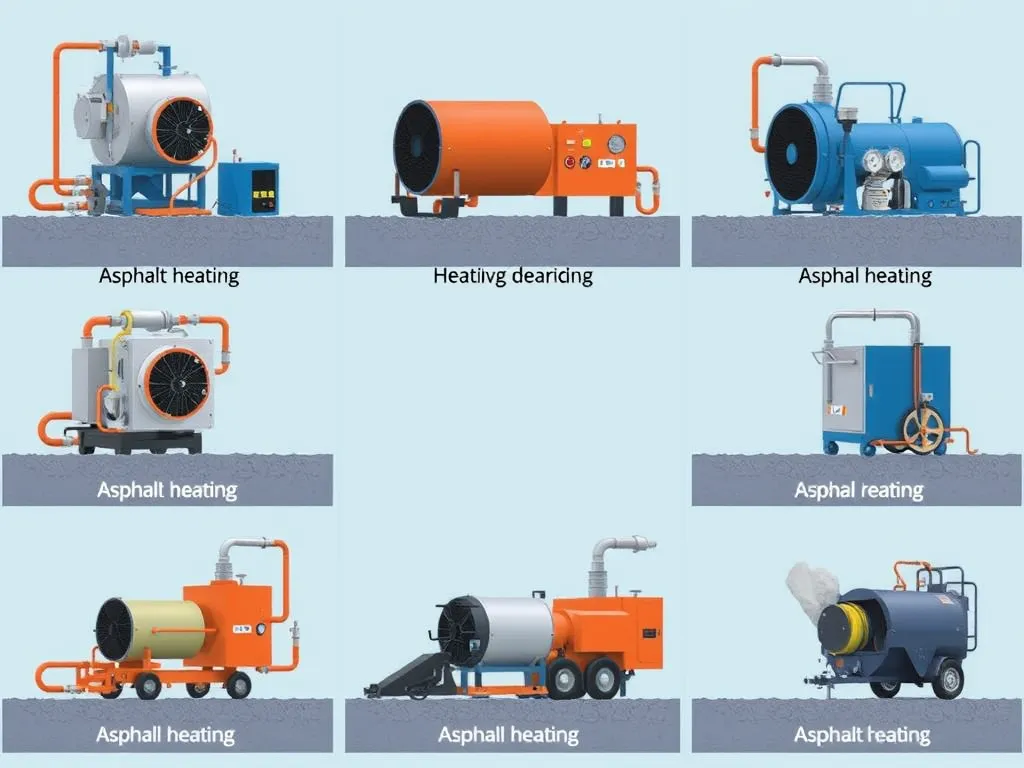Asphalt Rutting Solutions: Causes, Repair, and Prevention
Published on: August 4, 2025 | Last Updated: April 14, 2025
Written By: George Voss
Asphalt rutting solutions fix permanent grooves in pavement caused by heavy traffic, high heat, or weak base layers. Repair methods range from infrared patching to full-depth reclamation. Prevention strategies include rut-resistant mixes and improved drainage. Left untreated, rutting reduces traction and increases flooding risks. It can cut pavement lifespan from 20 years to 10. Choosing the right solution depends on rut depth, traffic volume, and budget. Preventive measures typically cost 60% less than major repairs.
This article explains how ruts form in asphalt and how to measure their depth. Learn which repair method works best for surface cracks or structural damage. Compare costs between milling and hot in-place recycling. Explore eco-friendly options like recycled asphalt pavement (RAP) and low-energy repair techniques. We also cover industry standards for acceptable rutting levels and long-term preservation strategies.
Contents
What is Rutting in Asphalt Pavement?
Rutting in asphalt shows as long lines or grooves in wheel paths. These dips form when heavy loads push down on weak spots. Over time, ruts deepen and hurt road safety.
Definition Of Asphalt Rutting
Asphalt rutting is pavement damage where wheels leave trails. It happens when heat softens the mix or layers below fail. The top layer bends under weight, creating troughs up to 3 inches deep. Key parts like aggregates (crushed rock) and binder (asphalt glue) lose grip, letting ruts take shape.
Why Rutting Impacts Pavement Performance
Ruts trap water, raising flood risks. At ½ inch deep, pools form, causing cars to skid. They also strain the base, speeding up cracks. Fixing asphalt ruts costs $3-$7 per square foot if ignored. Roads wear 40% faster once ruts reach 0.6 inches per AASHTO rules. Ruts hide potholes, needing complex asphalt ruts pothole repair later.
Let’s break down why ruts form. Next, we’ll explore key causes like heavy trucks and mix flaws.
Causes Of Rutting in Asphalt
Ruts form when forces push asphalt past its limits. Five key factors lead to these grooves. Each demands specific fixes.
Excessive Traffic Loads and Volume
Heavy trucks crush asphalt over time. One 18-wheeler does as much harm as 10,000 cars. Roads built for 10,000 ESALs (truck counts) fail fast under 50,000 ESALs. Mixes with stone-on-stone contact resist better.
High-temperature Susceptibility
Heat softens the binder that holds asphalt. PG 64-10 binders fail at 70°F+. Upgrading to PG 76-22 cuts rut depth by 80% in hot zones. Night work in summer helps fresh pavement set right.
Weak Subgrade or Base Layer
Soft soil under roads sinks under weight. A base with 6% CBR fails in 2 years. Rebuilding it with 8″ crushed stone (98% compaction) stops 90% of subgrade ruts. Geo-grids add strength for heavy lanes.
Poor Drainage Design
Water eats at the base. Slopes under 2% let pools form. Adding French drains every 20 feet cuts water damage by half. Permeable asphalt lets 5,000 gallons/day pass through, keeping bases dry.
Inadequate Mix Design or Binder Content
Wrong stone size or low binder causes weak spots. Superpave mixes with 12.5mm stone last 15+ years. Binder under 5.3% leads to ruts in 3 years. Lab tests prove 19% VMA gives best rut fight.
Knowing these root causes sets the stage for precise fixes. Next, we explore how to track rut growth with the right tools and specs.

How to Measure Rutting in Asphalt Pavement
Tracking rutting in asphalt requires precise measurement to determine repair needs. Regular checks help catch issues before they worsen, saving up to 40% on future maintenance costs.
Tools for Measuring Rut Depth
Professionals rely on specialized tools to gauge rut severity. The most common include:
| Tool | Use Case | Precision |
|---|---|---|
| Straightedge | Quick field checks | ±1/8 inch |
| Laser Profiler | Highway surveys | ±0.04 inch |
| 3D Imaging Systems | Detailed pavement analysis | ±0.02 inch |
Laser profilers dominate highway work due to their speed—they scan roads at 60 mph while collecting data points every 0.1 inch.
Industry Standards for Acceptable Rutting Levels
The Federal Highway Administration (FHWA) sets strict limits for rutting in asphalt. For most roads, ruts deeper than 0.5 inches trigger repair mandates. Local guidelines vary:
- Residential streets: Max 0.75-inch depth
- Interstate highways: Max 0.35-inch depth
ASTM E1703 specifies testing protocols, while AASHTO T 256 governs long-term monitoring. Surpassing these thresholds cuts pavement life by 30-50% due to hydroplaning risks or structural harm.
With precise measurement data, teams can decide whether fixing asphalt ruts needs surface treatments or full-depth reconstruction. Next, we’ll explore methods to stop rutting before it forms.
Also See: Energy Savings in Asphalt Recycling: Benefits for You
Preventing Asphalt Rutting
Stopping ruts before they form saves money and extends pavement life. Focus on material quality, installation practices, and structural support systems.
Using Rut-resistant Asphalt Mixes
Superpave-designed mixes with PG (Performance Graded) binders resist deformation under heavy loads. These blends use angular aggregates and polymer-modified binders for 30-50% higher shear strength than standard asphalt.
Role of Anti-Rutting Additives
- Polymer modifiers: Styrene-butadiene-styrene (SBS) boosts binder elasticity
- Fibers: Cellulose or polyester fibers add tensile strength
- High-density mixes: Stone matrix asphalt (SMA) locks aggregates into tight frameworks
Additives can cut rut depth by up to 80% in high-traffic zones like truck lanes or intersections.
Proper Compaction During Installation
Target 92-96% density using vibratory steel-wheel rollers. Cooler than 185°F mat temperatures cause poor bonding, while over 275°F risks binder oxidation. Use infrared thermography to monitor heat consistency.
Reinforcing Subgrade and Base Layers
Weak layers shift under loads, pushing ruts upward. Strengthen with:
- 6-12” crushed aggregate base (CBR ≥ 80)
- Geogrids or geotextiles between layers
- Lime/cement stabilization for clay-heavy soils
Implementing Effective Drainage Systems
Water weakens base layers, accelerating rut formation. Install:
- 2% cross-slope paving for surface runoff
- French drains or trench drains along edges
- Permeable asphalt shoulders (30% void space)
Proper drainage cuts water-related rutting by 40-60% in freeze-thaw regions.
With prevention strategies in place, let’s explore proven methods for fixing existing ruts.

Best Asphalt Rutting Repair Methods
Effective fixes for asphalt rutting depend on rut depth, traffic patterns, and base layer integrity. Options range from surface treatments to full structural overhauls.
Surface-level Solutions
Shallow ruts (under 1 inch) often get addressed with non-invasive methods. These fast repairs restore smooth surfaces without heavy equipment.
Asphalt Ruts Repair Compound Application
Cold-mix asphalt repair compounds fill ruts up to 1.5 inches deep. Workers apply this polymer-modified material directly into depressions, then compact it with vibratory rollers. Curing takes 2-4 hours, allowing same-day traffic reopening. Costs average $1.20-$2.80 per square foot.
Infrared Patching for Minor Ruts
Infrared heaters soften existing asphalt around ruts, enabling crews to blend new hot-mix into damaged areas. This creates seamless repairs for ruts under 1 inch deep. The process takes 30-60 minutes per patch, costing $2.50-$4.50 per sq ft.
Structural Repairs
Deeper rutting (over 1.5 inches) signals base failures needing layered fixes. These methods address both surface defects and underlying weaknesses.
Asphalt Milling and Resurfacing
Rotary milling machines remove 1.5-3 inches of deformed pavement before laying fresh hot-mix asphalt. Ideal for ruts caused by surface mix issues, this method extends pavement life 8-12 years. Project costs range $3-$7 per sq ft.
Full-Depth Reclamation
For ruts exceeding 3 inches, crews pulverize the entire asphalt structure and 6-12 inches of base material. They mix in cement or asphalt emulsion to create a stabilized base layer, then add new pavement. This permanent fix costs $8-$15 per sq ft but eliminates recurring rutting in 90% of cases.
Hot In-place Recycling Techniques
Specialized equipment heats and scarifies rutted asphalt, mixes in rejuvenators or PG 64-22 binder, then recompacts the material. This method repairs ruts up to 2 inches deep while reusing 100% of existing pavement. Production rates hit 3-5 lane miles per week, cutting material costs by 40% versus traditional resurfacing.
Combining Crack Filling With Rut Repairs
Simultaneous crack sealing prevents water infiltration that weakens repaired ruts. Crews often pair rubberized asphalt crack filler with rut repairs at $0.50-$1.20 per linear foot. This dual approach boosts repair longevity by 30-50%.
| Method | Depth Range | Cost/Sq Ft | Lifespan Extension |
|---|---|---|---|
| Repair Compound | 0.5-1.5″ | $1.20-$2.80 | 1-3 years |
| Infrared Patching | 0.25-1″ | $2.50-$4.50 | 3-5 years |
| Milling/Resurfacing | 1.5-3″ | $3-$7 | 8-12 years |
While these methods address existing damage, material choices during repairs significantly impact ecological footprints. The next section examines sustainable practices for rut remediation.
Environmental Considerations in Rut Repair
Addressing asphalt rutting requires balancing durability with eco-friendly practices. Sustainable methods cut waste, save resources, and meet stricter environmental regulations.
Using Recycled Asphalt Pavement (RAP)
Recycled Asphalt Pavement (RAP) mixes reclaimed asphalt chunks into new repair materials. RAP reduces demand for virgin aggregates and lowers carbon emissions by up to 20% per ton. Modern asphalt plants now allow up to 40% RAP in rut-resistant mixes without sacrificing performance. For surface-level fixes, contractors use RAP-based asphalt ruts repair compound to fill ruts at half the cost of new materials.
Low-energy Repair Methods
Cold in-place recycling (CIR) and infrared patching slash energy use by 60% compared to traditional hot-mix methods. CIR recycles existing pavement at ambient temperatures below 250°F, bonding fresh binder to old layers. Infrared heaters target small rutted areas, softening asphalt for reshaping without full removal. These methods emit fewer particulates and cut fuel consumption during repairs.
Combining RAP with low-energy techniques extends pavement life while meeting EPA guidelines. These strategies tackle rutting in asphalt while keeping projects under budget and within environmental limits. Up next: answers to frequent questions about timing, costs, and signs your pavement needs professional attention.

FAQs on Asphalt Rutting Solutions
How Long Do Rut Repairs Last?
The longevity of rut repairs can significantly vary based on the repair method used, traffic loading, and environmental conditions. Generally, surface-level repairs may last between 1 to 5 years, while structural repairs like milling and resurfacing can extend the lifespan of the pavement by 8 to 12 years or more when properly maintained.
Can Small Ruts Lead to Larger Pavement Issues?
Yes, even small ruts can exacerbate pavement issues over time. They can trap water, leading to hydroplaning or increased levels of water penetration which may weaken the underlying layers. If not addressed, small ruts can grow deeper and require more extensive repairs in the future.
When is Professional Repair Necessary?
Professional repair is recommended when rut depth exceeds acceptable levels, typically around 0.5 inches, or when ruts are causing significant safety hazards like reduced traction. Additionally, if the surface shows signs of severe wear, underlying structural failures, or the need for specialized equipment and techniques, hiring professionals becomes essential to ensure effective and lasting repairs.
Closing Thoughts
Addressing asphalt rutting is imperative for maintaining pavement quality and safety. Understanding its causes helps in taking proactive steps to prevent issues before they escalate. Utilizing rut-resistant mixes and proper installation techniques can significantly reduce the risk of rutting over time.
When repairs are necessary, several methods are available. From surface-level approaches like infrared patching to more intensive solutions such as full-depth reclamation, selecting the right repair method can prolong pavement life and enhance performance.
Be sure to consider environmental impacts. Employing recycled asphalt pavement not only conserves resources but also minimizes waste. Low-energy repair options can bring additional sustainability benefits.
For more insights and tools related to asphalt rutting solutions, visit Asphalt Calculator USA.


